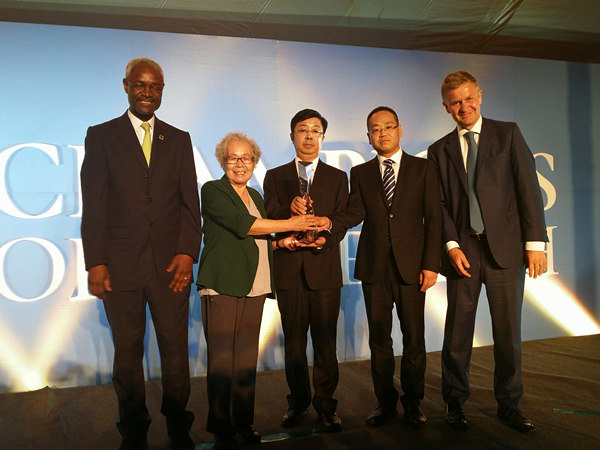

Editor's Note: With more made-in-China products being exported to the United States, more and more domestic manufacturers are trying to obtain trademark protection in US jurisdiction. The US trademark protection system is the most advanced in the world and it has formed its own unique system. The US trademark identification of goods and services also has unique characteristics. So analyzing the features of the US trademark identification of goods and services is key to overcoming problems when dealing with US Trademark applications.
Li Shi, trademark attorney at Unitalen, talks about the features of US Acceptable Identification of Goods and Services Manual; how to avoid the common mistakes that trigger the Official Action, issued by United States Patent and Trademark Office (USPTO); and how domestic applicants and IP colleagues can find the most cost-efficient approaches to obtain US trademark protection.

China Business Weekly ran the first part of the article in the last issue. Below is the rest of the article. The views expressed here are the author's own.
Generally speaking, the trademark identification determines the scope of the trademark rights covered by the registration and it is necessary for the USPTO to evaluate the application for substantive compliance with the applicable rules.
If the identification of goods or services does not satisfy the USPTO requirement, the USPTO will deny a filing date to the application for failure to specify recognizable goods or services and issue an Official Action.
The Official Action is a written document issued by the USPTO examining attorney assigned to the application that identifies issues relating to the application. The identification requirement always raises an Official Action. For a better understanding, the Official Action equals the objection issued by the State Intellectual Property Office of China.
While the identification of items may be amended to clarify or limit the goods, adding to the items or broadening the scope of the items is not permitted. Therefore, the applicant may not amend the identification to include items that are not within the scope of the items. Furthermore, if the applicant fails to respond, the Official Action regarding the identification issue, the "problem" goods or services will be deleted from the application.
Facts and examples will help us in bettering our understanding of the issue.
Be precise
The applicant should always try to be specific in terms of identification. Some countries, such as Argentina and Iraq accept the title of an international class (Trademark full class protection), for example, "advertising and business" (Class 35). In US trademark application circumstances, such identification is generally insufficient; the USPTO examining attorney may accept the precise specification after narrowing the identification.
The applicant should acknowledge the following terms, which are inherently indefinite and should avoid: "such as"; "including"; "comprising"; "and the like"; "similar goods"; "concepts"; "device"; "apparatus"; "products"; "accessories".
It is advised that the following terms should be used in identifying the goods or services: "namely"; "in the field of"; "consisting of'; "for the purpose of".
Avoid parentheses
Generally, parentheses and brackets should not be used in identification. Parenthetical information is permitted in identifications only if it serves to explain or translate the matter immediately preceding the parenthetical phrase in such a way that it does not affect the clarity of the identification, for example, obi (Japanese sash). Therefore, the applicant must remove the parentheses from the identification of goods and incorporate the parenthetical information into the description.
False statements
The US trademark statute requires the applicant or his attorney to submit with the application, a sworn statement (if necessary) that the applicant is using the mark or has a bona fide intent to use the mark in US commerce with or in connection with all of the goods and or services identified in the application as of the date the application is filed. An acceptable mark specimen must show the mark as it is actually used in the sale or advertising of the service in each class cited in the application.
The application cannot and should not identify any goods or services with which the mark is not being used for, or which there is no intention to use the mark in US commerce. False statements or misrepresentations concerning use of the mark with any goods and services identified in the application is tantamount to fraud and the Trademark Office has adopted a strict rule on fraud.
One American colleague once advised me, "Any false statement concerning the use of the mark with any of the goods is a material misrepresentation of fact for which there are costly ramifications. Specifically, the resulting registration would become vulnerable to attack in an adversarial proceeding, namely, opposition and cancellation proceedings. False statements regarding the goods or services cannot be cured by later amendment - apparently even if the amendment is sought before an adversary makes a claim of fraud. The result may not only be a loss of the registration, but possibly other ramifications should the mark become involved in litigation. The conduct, which filing the false statements to USPTO would put applicants or his representatives into jeopardy."
Importunely, there are a few Chinese domestic applicants ignoring the risk stated above, filing the fake specimen of use with the application supporting files on the actual use filing basis. Consequently, if the applicant fails to meet the requirement and the amendment, the applicant will then need to file a new application (with a separate fee, of course), thereby losing any priority associated with the earlier filing date of the initial application.
My suggestion is, like testifying in the courtroom, one should tell the truth, the whole truth and nothing but the truth. Legally speaking, any amount of bona fide commercial use can lead to the grant of protection. Where an applicant has no documentation of his plans to use the mark on the claimed goods or services, it is a wise move that providing written confirmation and documented evidence that, currently using the proposed mark with all of the proposed services in US commerce.
If there are any identification of goods and services, which the applicant client is not using the mark or does not have a bona fide intention to use the mark, it is strongly recommended that the applicant does not include those services in the application. For those items for which the applicant is not yet using the mark, but has a bona fide intention to use it in the US, it is recommended that the applicant file an ITU application.
Furthermore, before the applicant files the application or after obtaining the certificate of Trademark Registration, it is recommended that the applicant keep the evidence of use (specimens), such as newspaper and magazine advertisements, brochures, billboards, handbills, and direct-mail leaflets. Business documents such as letterheads and invoices may be acceptable service mark specimens if they show the mark and refer to the relevant goods or services.
All in all, the core issue of domestic applicants should acknowledge that there are huge differences between the US and Chinese trademark regulations. The domestic applicant should learn how to "switch the channel" when handling the US trademark application, as it is almost impossible to obtain a full class, from Class 01 to Class 45, Trademark Certificate of Registration in the US.
(China Daily 09/22/2008 page9)













